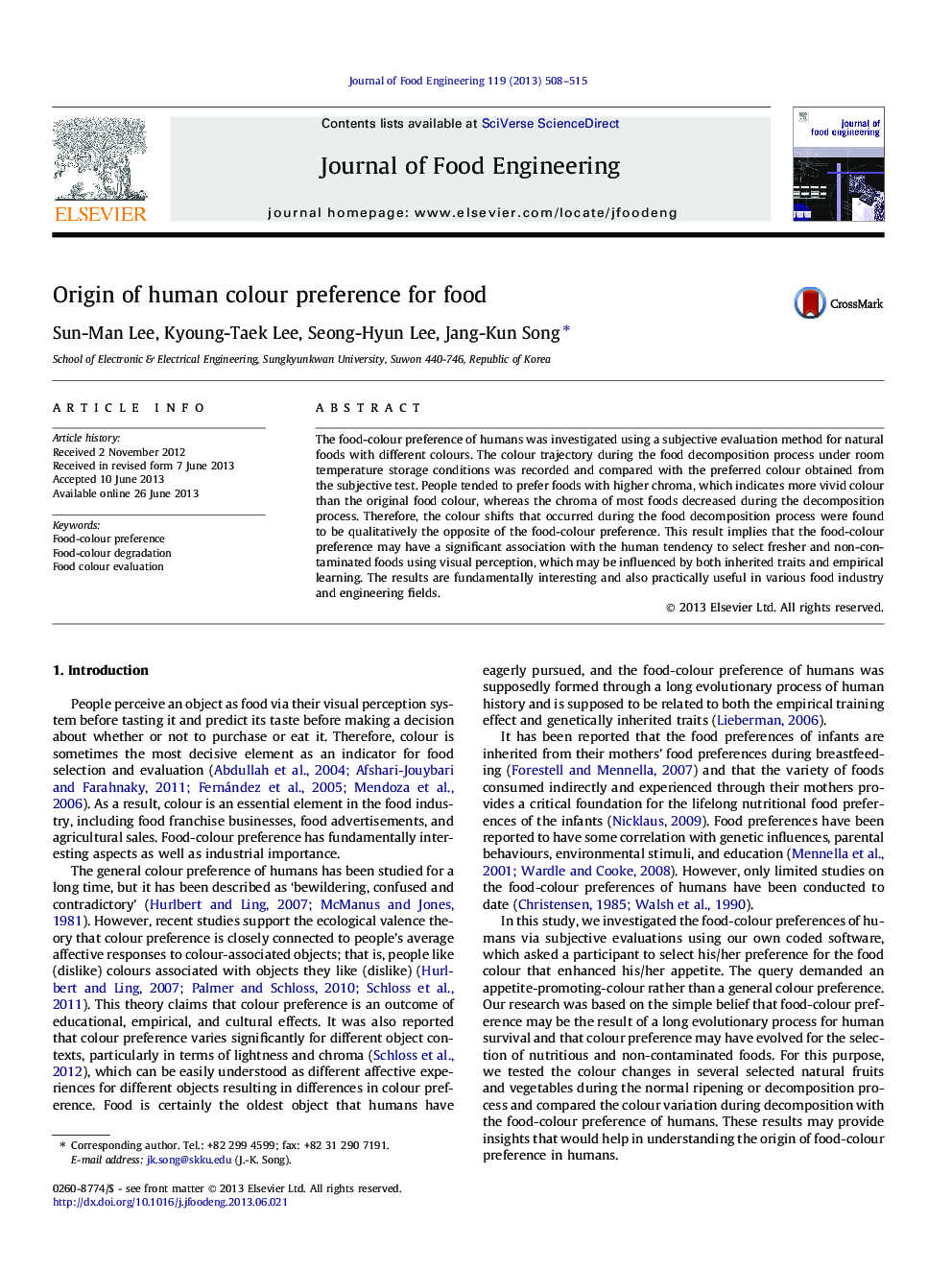| Article ID | Journal | Published Year | Pages | File Type |
|---|---|---|---|---|
| 10277273 | Journal of Food Engineering | 2013 | 8 Pages |
Abstract
The food-colour preference of humans was investigated using a subjective evaluation method for natural foods with different colours. The colour trajectory during the food decomposition process under room temperature storage conditions was recorded and compared with the preferred colour obtained from the subjective test. People tended to prefer foods with higher chroma, which indicates more vivid colour than the original food colour, whereas the chroma of most foods decreased during the decomposition process. Therefore, the colour shifts that occurred during the food decomposition process were found to be qualitatively the opposite of the food-colour preference. This result implies that the food-colour preference may have a significant association with the human tendency to select fresher and non-contaminated foods using visual perception, which may be influenced by both inherited traits and empirical learning. The results are fundamentally interesting and also practically useful in various food industry and engineering fields.
Related Topics
Physical Sciences and Engineering
Chemical Engineering
Chemical Engineering (General)
Authors
Sun-Man Lee, Kyoung-Taek Lee, Seong-Hyun Lee, Jang-Kun Song,
